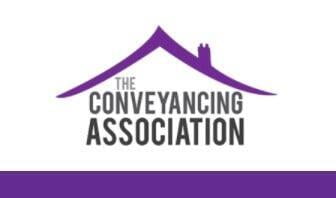The A-Z of Conveyancing
Here we have a handy guide to the A - Z of conveyancing!
A legal document that sets out all details regarding a property transaction that both parties agree on including information on the property itself, the buyer, and the seller.
A process of due diligence that a conveyancer legally must undertake on every client and property transaction they manage in under to prevent money laundering, fraud, and the funding of terrorism. The AML procedure will include, but may not be limited to, confirming the ID of a client, being satisfied of the intentions of the transaction, hold proof of the source of the funds that are used to purchase a property, and confirm the ownership of the property.
The fee charged by your conveyancer for the benefit of their knowledge, time, and expertise during your property transaction. At Dezrezlegal we offer a fixed fee for standard transactions and itemise any additional charges and disbursements on your estimate. Some firms will charge you an hourly rate for their time rather than a fixed basic fee.
Once contracts have been exchanged, if either party pulls out and does not complete the property transaction they are in Breach of Contract and the non-defaulting party can take legal action to recover losses incurred.
Carried out to establish if a property is affected by disused brine mines and works in close proximity.
Boundaries define the extent of the property that is being transferred and are usually marked by physical structures such as fencing, hedging or walls. The legal boundary is usually illustrated explicitly in H. M. Land Registry records either as a description of the area dividing one property from another or as a line on the title deeds plan.
This Latin term literally translates to ‘let the buyer beware’ and means the buyer is responsible for finding out the condition of a property using a surveyor.
Where the success of one purchase transaction depends on the sale and purchase of another. Several ‘links’ in the chain can make the conveyancing process particularly complicated.
A mortgage/loan secured against a property.
Items of personal property left at a property that are included in the purchase price, such as furniture. These are described on the Fixtures, Fittings and Contents form.
The initial letter sent to you by your conveyancer to provide contact details, confirm the scope of the work that will be carried out, costs associated to your transaction, and provide you with access to their complaint procedure.
If the property is situated in a coal mining area this search will be conducted by your conveyancer to find out if previous or existing coal mining activities will affect the property in the future.
A search carried out at local authorities to ensure a property is not registered as common land or connected to a village green, resulting in third party rights over the property.
The legal end of the conveyancing process – the point at which full payment has been made and the buyer takes ownership of the property. In everyday language it refers to handing over keys and the buyer physically moving into the property.
A documented financial breakdown of the property transaction, which details the conveyancer’s full fees including disbursements and VAT.
If the property to be bought lies in a conservation area protected by a local authority, it may be subject to exterior planning restrictions to preserve the look of the area.
A legal document that sets out all details regarding a property transaction that both parties agree on including information on the property itself, the buyer and the seller.
As I went on, still gaining velocity, the palpitation of night and day merged into one continuous greyness; the sky took on a wonderful deepness of blue, a splendid luminous color like that of early twilight; the jerking sun became a streak of fire, a brilliant arch, in space; the moon a fainter fluctuating band; and I could see nothing of the stars, save now and then a brighter circle flickering in the blue.
A search carried out during the conveyancing process to reveal information on sewer and water connections to the property.
If your property purchase or remortgage completes before the end of your existing mortgage term you will be paying back your mortgage loan early. In most cases your mortgage lender will charge you an additional sum of money to cover the interest they will not receive on the amount you have repaid early. This additional charge is called an ERP.
A right of way over another person’s piece of land.
This form is completed by the seller and provided by the seller’s conveyancer to the buyer’s conveyancer. It sets out what parts of the property are included in the sale and must be viewed and approved by the buyer before it forms part of the contract and exchange takes place.
When a homebuyer is given a lump sum of money towards the deposit for their property purchase. The giver of the sum does so as a gift and not a loan and has no intention of owning part of the property. Usually, mortgage lenders require such gifts to be referred to them for approval and they may require the giftor to sign a statement to confirm the gift and that they have no intention of asserting any ownership rights over the property at that time or in the future.
The government body that ensures the correct registration and recording of ownership of property and land throughout England and Wales.
The definition is complex but generally a HMO is when a property is let to more than one household with more than 2 occupants. If a property is a HMO the landlord has additional legal responsibilities that must be met. You can find out more on the government website Private renting: Houses in multiple occupation - GOV.UK (www.gov.uk)
A type of registered property ownership where all owners own the entire property. Should one of the registered owners die their share automatically passes to the remaining owners.
A form completed by the seller of a leasehold property at the start of a transaction. This form provides information about the lease associated to the property, any landlord or management company, as well as financial information about ground rent or service charges.
The seller is required to complete this document truthfully and the best of their knowledge. The completed form is sent to the buyer’s conveyancer by the seller’s conveyancer and usual forms part of the Draft Contract Pack.
The Legal Ombudsman offers independent and impartial complaints handling to all those that are unhappy about services they have received across any area of the legal sector. Once you have complained to your conveyancer they have 8 weeks to deal with your complaint to your satisfaction. If you are not satisfied by the outcome of the complaints process and the 8-week period has expired, you may then escalate your complaint to the Legal Ombudsman.
The Local Authority Search is conducted during the early stages of the conveyancing process and is obtained to highlight any plans of the local authority that may affect the state of the property. It is important to note that this only refers to things affecting the land up to the legal boundaries of the property.
A legally binding agreement that uses property as security for a loan. The mortgage deed is the document that your conveyancer will send you on behalf of your mortgage lender that you sign to confirm your agreement for the mortgage lender to place their interest of the title of the property until the loan is paid in full.
The document outlining who owns the property, held by H.M. Land Registry. It is requested by your conveyancer at the start of the conveyancing process.
Mortgage companies require conveyancers to collect occupier’s consent on their behalf when a person over 17 lives at a property but is not named on the mortgage. Consent is required to confirm that the person will move out of the property if the mortgage lender takes possession due to a default of the mortgage
A term used during contract negotiations; nothing is legally binding until contracts are exchanged.



